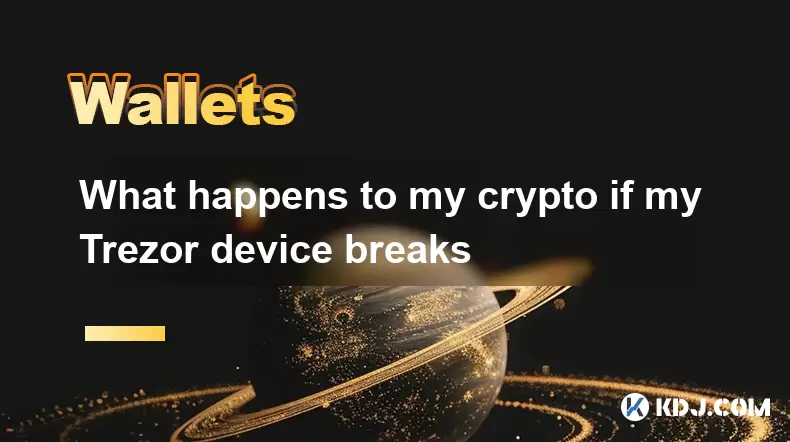-
 Bitcoin
Bitcoin $117,576.6195
-0.21% -
 Ethereum
Ethereum $2,938.5668
-1.35% -
 XRP
XRP $2.7699
4.60% -
 Tether USDt
Tether USDt $1.0003
0.01% -
 BNB
BNB $688.1624
-0.01% -
 Solana
Solana $160.5113
-1.95% -
 USDC
USDC $0.9999
0.01% -
 Dogecoin
Dogecoin $0.1976
-0.70% -
 TRON
TRON $0.3008
1.54% -
 Cardano
Cardano $0.7159
-2.16% -
 Hyperliquid
Hyperliquid $46.2240
2.04% -
 Stellar
Stellar $0.3966
22.03% -
 Sui
Sui $3.3928
-3.11% -
 Chainlink
Chainlink $15.1204
-2.43% -
 Bitcoin Cash
Bitcoin Cash $515.1741
-1.19% -
 Avalanche
Avalanche $20.8130
-0.90% -
 Hedera
Hedera $0.2001
-2.12% -
 UNUS SED LEO
UNUS SED LEO $9.0522
0.72% -
 Shiba Inu
Shiba Inu $0.0...01316
-2.01% -
 Toncoin
Toncoin $2.9843
0.61% -
 Litecoin
Litecoin $92.6745
-2.71% -
 Polkadot
Polkadot $3.9483
-0.06% -
 Monero
Monero $328.5347
1.10% -
 Dai
Dai $0.9998
0.01% -
 Ethena USDe
Ethena USDe $1.0006
-0.01% -
 Uniswap
Uniswap $8.3739
-6.50% -
 Bitget Token
Bitget Token $4.4241
-1.99% -
 Pepe
Pepe $0.0...01222
-3.96% -
 Aave
Aave $300.5203
-3.61% -
 Bittensor
Bittensor $382.2607
-1.92%
What is the "Transaction Reverted" error in MetaMask?
A "Transaction Reverted" error in MetaMask occurs when a smart contract halts execution due to invalid conditions, rolling back changes but still consuming gas fees.
Jul 13, 2025 at 12:42 am

Understanding the "Transaction Reverted" Error in MetaMask
The "Transaction Reverted" error is a common issue that users encounter when interacting with decentralized applications (dApps) or smart contracts using MetaMask, one of the most widely used cryptocurrency wallets. This error typically indicates that a transaction was executed but did not complete successfully due to an internal condition within the smart contract.
When a transaction reverts, it means that the smart contract detected an invalid state or condition and stopped execution to prevent unintended consequences. The Ethereum Virtual Machine (EVM) rolls back all changes made during the transaction, but the gas fees are still consumed because computational resources were used.
Common Causes of Transaction Reversion
Several conditions can cause a transaction to revert on the Ethereum blockchain:
- Insufficient funds: If the sender doesn’t have enough ETH to cover both the value being sent and the gas fees, the transaction may fail.
- Failed require/assert statements: Smart contracts often include
require,assert, orrevertstatements to enforce logic. If these conditions are not met, the transaction will revert. - Out-of-gas errors: Although this usually appears as an out-of-gas error, some scenarios might return a revert message instead.
- Incorrect function parameters: Sending incorrect or malformed data to a smart contract function can trigger a revert.
- Reentrancy guard triggers: Contracts with security measures like reentrancy guards may revert transactions if they detect potentially malicious behavior.
Each of these causes must be addressed individually depending on the context in which the error occurs.
How to Diagnose a "Transaction Reverted" Error
To understand why a transaction reverted, you can follow these steps:
- Check the transaction hash: Use a blockchain explorer like Etherscan to look up the transaction details.
- Review the transaction logs: Examine the event logs emitted by the smart contract to identify where the failure occurred.
- Inspect the contract code: If the source code is verified on Etherscan, you can cross-reference the error messages with specific lines of code.
- Use debugging tools: Tools like Hardhat or Truffle can simulate transactions locally and provide more detailed error output.
- Read the revert reason string: Some contracts return a human-readable explanation for the revert, especially if compiled with Solidity version 0.6.3 or later.
These diagnostic methods help narrow down the root cause without guesswork.
Examples of Transaction Reversion in Practice
Consider a scenario where a user attempts to swap tokens on a decentralized exchange like Uniswap. They input the amount of token A they want to swap for token B. If the slippage tolerance is too low or the price changes significantly before the transaction is mined, the contract may revert the transaction to avoid unfavorable trades.
Another example involves staking tokens in a DeFi protocol. If the user hasn’t approved the contract to spend their tokens via the ERC-20 approve() function, any attempt to deposit into the staking pool will result in a revert.
In both cases, the underlying smart contract logic includes checks that prevent invalid operations, and when those checks fail, the transaction is reverted.
How to Resolve the "Transaction Reverted" Error
Depending on the cause, different strategies can resolve this issue:
- Increase gas limit manually: Sometimes the default gas estimation is insufficient. Go to the transaction confirmation screen in MetaMask and increase the gas limit slightly.
- Double-check input parameters: Ensure that token addresses, amounts, and other function arguments are correct before submitting a transaction.
- Approve token allowances properly: Before performing actions that involve token transfers, ensure that the dApp has sufficient allowance to access your tokens.
- Adjust slippage settings: In DeFi apps, increasing the slippage tolerance marginally can prevent reverts caused by volatile market conditions.
- Contact support or check documentation: Many dApps provide troubleshooting guides or customer support to assist users encountering transaction issues.
By following these steps, many instances of the "Transaction Reverted" error can be resolved without needing deep technical knowledge.
Frequently Asked Questions
Q: Can I get a refund for gas fees if my transaction reverts?
No, once a transaction is processed by the network, the gas fees are non-refundable even if the transaction reverts. This is because miners or validators still expend resources executing the transaction.
Q: Does a reverted transaction affect my wallet balance?
A reverted transaction does not change the state of the blockchain, so no funds are transferred. However, the gas fee paid in ETH is deducted from your wallet.
Q: How can developers prevent transactions from reverting?
Developers can implement thorough testing, use proper error handling, and provide clear revert messages. Additionally, simulating transactions off-chain before submission helps catch potential issues.
Q: Is a "Transaction Reverted" error a sign of a scam or malicious contract?
Not necessarily. While malicious contracts can also cause reverts, most occurrences are due to normal contract logic or user-side mistakes. Always verify contract addresses and read transaction details carefully.
Disclaimer:info@kdj.com
The information provided is not trading advice. kdj.com does not assume any responsibility for any investments made based on the information provided in this article. Cryptocurrencies are highly volatile and it is highly recommended that you invest with caution after thorough research!
If you believe that the content used on this website infringes your copyright, please contact us immediately (info@kdj.com) and we will delete it promptly.
- Ethereum Price Prediction: Will ETH Reach 100% Gains?
- 2025-07-13 04:50:12
- Ruvi AI: The Smart Choice Over Avalanche? Plus, It's Audited!
- 2025-07-13 04:50:12
- Onyxcoin (XCN): Ready to Outperform in This Crypto Cycle?
- 2025-07-13 04:30:12
- GameFi, Regulated, Asia: A New Era of Web3 Gaming?
- 2025-07-13 04:30:12
- XRP Analyst Goes All In: Is $6 Inevitable?
- 2025-07-13 05:10:12
- Kenya's Crypto Strategy: Embracing Digital Tokens and Blockchain Innovation
- 2025-07-13 05:15:12
Related knowledge

What is a hardware wallet's secure element
Jul 11,2025 at 10:14pm
What is a Hardware Wallet's Secure Element?A hardware wallet is one of the most secure ways to store cryptocurrencies. Unlike software wallets, which ...

What is the difference between a custodial and non-custodial wallet
Jul 13,2025 at 03:21am
Understanding Wallet Types in CryptocurrencyIn the world of cryptocurrency, digital wallets play a crucial role in managing and securing assets. A wal...

How to add a new network to MetaMask
Jul 11,2025 at 11:42pm
Understanding the Need to Add a New NetworkWhen using MetaMask, a popular Ethereum-based cryptocurrency wallet, users often need to interact with diff...

How to add Ethereum L2 networks like Arbitrum to Trezor
Jul 11,2025 at 12:36am
What Is Ethereum L2 and Why Add It to Trezor?Ethereum Layer 2 (L2) networks, such as Arbitrum, are scaling solutions designed to reduce congestion on ...

What happens to my crypto if my Trezor device breaks
Jul 11,2025 at 01:49pm
Understanding Hardware Wallet FailureWhen you store cryptocurrency in a Trezor hardware wallet, the private keys are kept offline, offering a high lev...

How to find a specific receiving address on my Trezor
Jul 09,2025 at 10:36pm
Understanding the Purpose of a Receiving AddressA receiving address is a unique identifier used in blockchain networks to receive cryptocurrency. Each...

What is a hardware wallet's secure element
Jul 11,2025 at 10:14pm
What is a Hardware Wallet's Secure Element?A hardware wallet is one of the most secure ways to store cryptocurrencies. Unlike software wallets, which ...

What is the difference between a custodial and non-custodial wallet
Jul 13,2025 at 03:21am
Understanding Wallet Types in CryptocurrencyIn the world of cryptocurrency, digital wallets play a crucial role in managing and securing assets. A wal...

How to add a new network to MetaMask
Jul 11,2025 at 11:42pm
Understanding the Need to Add a New NetworkWhen using MetaMask, a popular Ethereum-based cryptocurrency wallet, users often need to interact with diff...

How to add Ethereum L2 networks like Arbitrum to Trezor
Jul 11,2025 at 12:36am
What Is Ethereum L2 and Why Add It to Trezor?Ethereum Layer 2 (L2) networks, such as Arbitrum, are scaling solutions designed to reduce congestion on ...

What happens to my crypto if my Trezor device breaks
Jul 11,2025 at 01:49pm
Understanding Hardware Wallet FailureWhen you store cryptocurrency in a Trezor hardware wallet, the private keys are kept offline, offering a high lev...

How to find a specific receiving address on my Trezor
Jul 09,2025 at 10:36pm
Understanding the Purpose of a Receiving AddressA receiving address is a unique identifier used in blockchain networks to receive cryptocurrency. Each...
See all articles

























































































